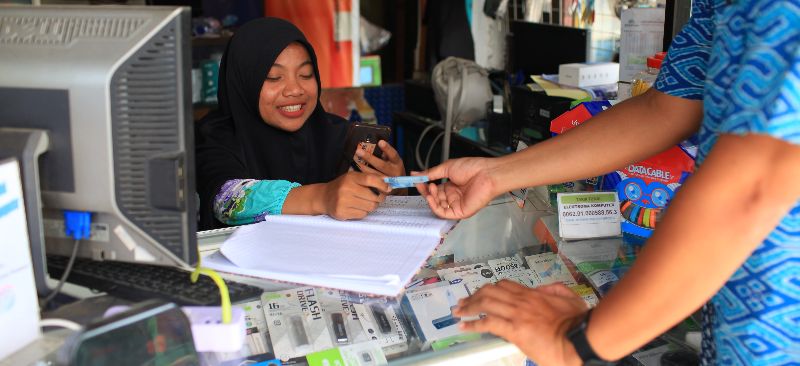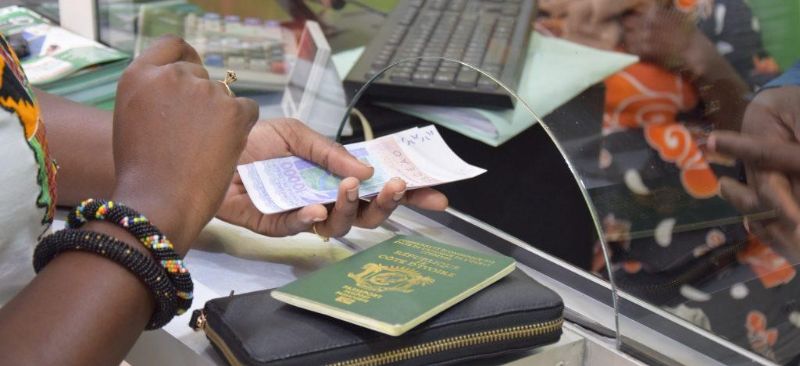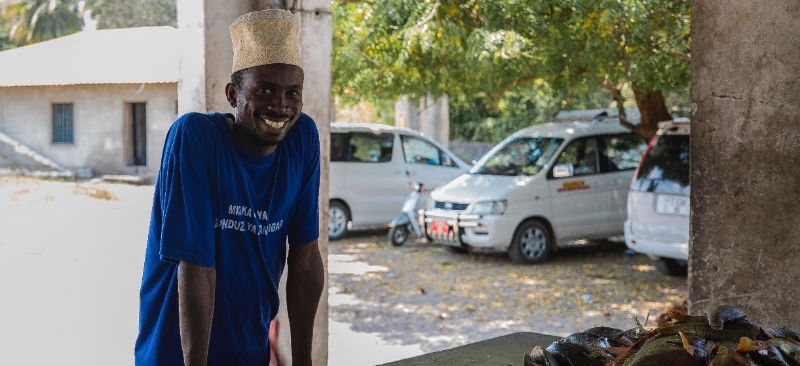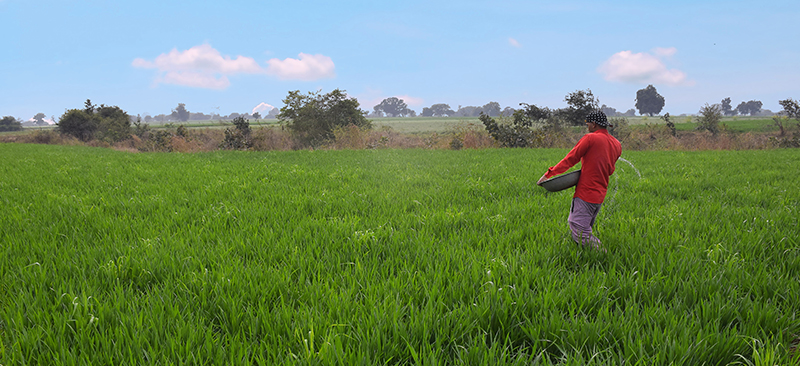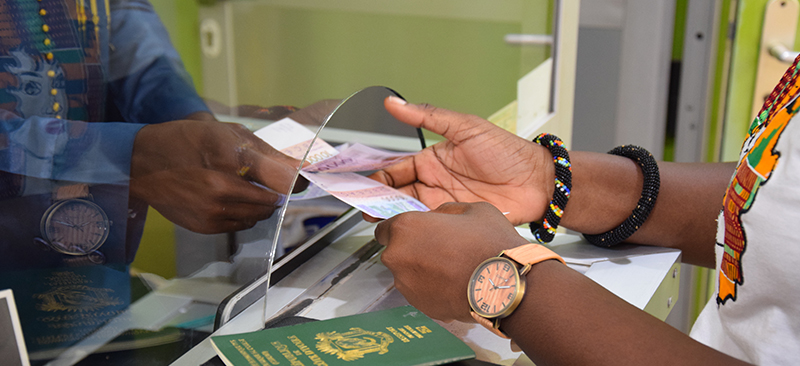The study provides insights into the challenges, time, and costs involved in the KYC processes of service providers. It also outlines policy recommendations to promote a public infrastructure for e-KYC to accelerate digital inclusion.
Blog
Impact of the COVID-19 pandemic on MSMEs
Relaxations in the large-scale social restrictions (PSSB) in July and August have marginally revived the revenues for the MSME sector while easing the pressure on supply chains. Although the government announced support measures, the overall realization of these programs continues to be low due to issues around identification and targeting. In this report, we present the impact of the pandemic on MSMEs and provide policy recommendations to address the current situation.
Read the report for the first round here.
What impact does social distancing have on global remittances?
When the coronavirus epidemic first appeared in China in December 2019, no one thought that by March 2020, the world and many of its economic activities would be at a standstill. The measures brought in to fight the epidemic, turned pandemic, brought certain activities to a halt, forcing many businesses to close. Money transfer outlets feature among the long list of closures, handicapping people used to cash-to-cash transactions. Such measures have disrupted people’s habits and left many migrants and their families without bearings. Remittance flows have shown significant growth in recent years, reaching $554 billion worldwide in 2019 and accounting for more than foreign direct investment or development aid in low-income countries. With the COVID-19 pandemic, global remittances are projected to decline by about 20 percent in 2020.
To what extent do digital channels provide attractive alternatives and opportunities for partnerships between money transfer services, governments and FinTechs?
“As part of my activities, I often received money from Africa via the usual money transfer companies (MoneyGram and Western Union). During the health crisis period brought about by COVID-19, it was no longer possible for me to make cash-out transactions. The lockdown implemented in France limited outings to essential activities. Thanks to a friend, I discovered the company Small World, which allowed me to receive money from Africa directly into my bank account with relatively low fees in less than three days,” says Mylène, a business owner who lives in Paris, France, with businesses in Abidjan, Côte d’Ivoire.
Some alternatives to cash-to-cash transactions already exist:
- Cash-to-account transfers: a minimum of 48 working hours is required. Western Union (WU), Small World (SW), RIA, MoneyGram all offer this service.
- Card-to-card transfers: only possible between cards of the same nature, but the transaction limits are low. The WAEMU GIM’s Baraka prepaid platform allows transfers of up to 100,000 FCFA a day.
- Transfers to mobile money accounts: partnerships with mobile money operators have made this option possible. This is the case of RIA and Orange Money in Senegal with the Kalpé offer for example.
- Money transfer applications and products developed by banks: Rapidtransfer, BOA Express, Oryx, and SC Mobile, for example.
- Money transfer service websites and applications: WU, SW, worldremit, Taptap Send, RIA and MoneyGram offer transaction options, especially for western residents
Challenges faced by customers and money transfer services
Cash point closures imposed by lockdown measures have forced money transfer customers to look for alternatives – including digital alternatives – which they are not familiar with. Moreover, concerns relating to cybercrime, appeal challenges and the complexity of certain customer processes, do not argue in favor of using new channels.
Ali, a money transfer user in Dakar, explains that he faced difficulties installing and using one of the money transfer operators’ applications, which led him to disable the application and settle for cash transactions.
Money transfer service providers do not communicate enough with their customers regarding these new channels, except for WU. Some services, such as cash-to-account transfers, are not available in every outlet and recipients do not always have an account.
Remittances via online platforms continue from the West to countries where cash withdrawals and mobile money cash-outs are still possible. However, current limitations (market closures, curfews, etc.) affecting informal activities, which account for about 55% of GDP in Sub-Saharan African, due to the evolution of COVID-19 cases in Africa, are likely to continue weakening economic activities. This may result in liquidity issues at mobile money agent outlets, for example. Customers, keen to limit any travel, are also increasingly looking for local solutions, recommended by friends and family.
Not all remitters have stable and formal jobs; the measures imposed by the COVID-19 epidemic have had a severe impact on migrant workers, forcing many to suspend their activities, sometimes without any compensation. Without income, these workers are unable to continue to support their families, with significant consequences given the impact and the role such support provides (health, education, investments, etc.). “My sister, a babysitter in France, used to send me 100 euros per month for the rent. Since the beginning of the lockdown and the suspension of her contract, she is no longer receiving enough income and is not able to send me the 100 euros in time. As a result, I have had to turn to friends or family members in Congo, which is not without consequences,” explains Ester, a Congolese student in Dakar. Maintaining money transfer operations is key; digital platforms provide an opportunity to ensure service continuity with limited disruptions, through strategic partnerships.
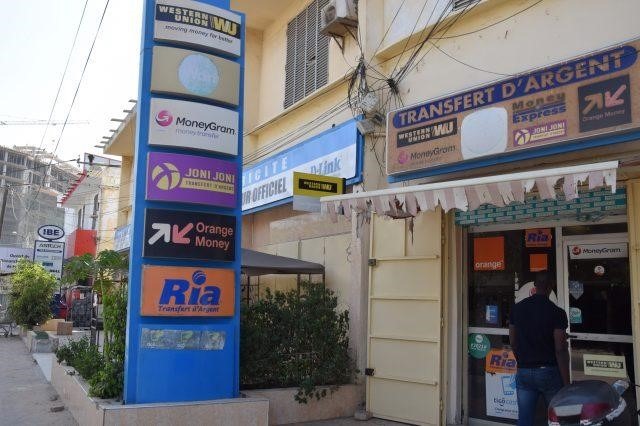
Some measures taken to support money transfers, in relation to COVID-19
Little has been done to adapt money transfer offers to COVID-19 realities. RIA, for example, recommends that their clients use its location platform, which is regularly updated, to find transaction outlets, or else to go to outlets providing cash-to-account services. Western Union makes the same recommendations with the addition of their wu.com application.
To limit cash circulation, some companies such as MTN in Guinea have waived some money transfer fees. The BCEAO has adopted seven measures to promote digital payments, including making certain transfers free of charge, eliminating and reducing merchant fees, and raising balance limits on electronic wallets.
What is the impact on the economies of Sub-Sahara Africa?
According to a World Bank report published at the end of April 2020, a 23.1 percent decline in remittances to Sub-Saharan Africa is expected in 2020. While it would be felt globally, the impact of such a decline would hit the weakest economies hardest. A study by MSC assessing the impact of COVID-19 on FinTechs, shows that regardless of their size, experience or sector, FinTech companies and mobile money operators have been affected by the crisis and have seen their activities slow down.
In this context, where remittances represent a significant share of GDP, it is important to ensure that money transfer outlets remain open and that the needs of the most vulnerable that depend on them are met. There is an opportunity to expand digital service offerings to ensure they can adapt to current constraints. What role do regulators, governments, but also the private sector, FinTechs, start-ups, banks and mobile money operators have to play in the promotion of digital innovation with regards to money transfers? How can financial literacy and digital adoption rates be increased to ensure the most vulnerable are not excluded in this period where contactless is the new norm? What measure have been taken at the sub-regional level? Can digital technology save the 20 million jobs at risk, as forecasted in a study by the African Union? These are some of the questions we will seek to answer in our next blog. Keep an eye on our website for more!
Use of remittances to encourage the unbanked to open accounts—a missed opportunity
Financial stability is the key to financial resilience. Remittances in Senegal exceed USD 2.2 billion a year but neither do the beneficiaries have access to financial services nor are they digitally literate enough to plan for their future. In times of need, money transfers provide another means of reimbursement for the households.
Abdoulaye is a young entrepreneur who lives in the rural region of Louga, which lies in northeast Senegal. He lives in the family compound owned by his uncle, which comprises 8 adults and 15 children. Abdoulaye holds a Baccalauréat diploma and owns a business. He manages to bring home a monthly income of XOF 100 000 (USD 170) through diverse activities.
Every month, his brother, who lives in France, sends him XOF 150 000 (USD 250) through a money transfer company to contribute to the household expenses, such as food, utility bills, healthcare costs, and school fees, among others. His brother’s financial support has enabled Abdoulaye to launch his own business, as well as to start saving on an informal basis.
Abdoulaye owns a shop that sells a variety of products based on demand, which is often governed by religious celebrations that are a central part of Senegalese life. For instance, his business revolves around the sale of ceremony garments during local celebrations such as the Touba Magal or the Tabaski. In the lead up to Tabaski, he also breeds sheep and each sale brings in up to XOF 100 000 (USD 170). To increase his income, Abdoulaye also purchases sheep sometimes that he later sells at public markets. It is during this time of the year that his investment needs are the highest. When schools reopen, he focuses on the sale of school equipment. An entrepreneur at heart, Abdouldaye knows how to manage and grow his money.
Through his foresight and tenacity, Abdoulaye manages to bring home a stable income. However, as he remains in the informal sector, financial institutions are blind to his financial capabilities. He is an active member of two “tontines” ( savings groups ) and contributes up to XOF 30,000 (51 USD) per month. Simultaneously, Abdoulaye has managed to gather his own personal savings, which he keeps as working capital. It allows him to cover the costs associated with the operation of his business and the purchase of merchandise.
The nature of his business requires financial flexibility that banks and MFIs cannot provide with their high-interest rates and rigid reimbursement timelines. However, his primary and secondary incomes increase his credit rating and highlight his ability to reimburse.
Abdoulaye meets all the reliable and responsible customer characteristics set by financial institutions. However, he relies heavily on the remittances sent by his brother and on the informal borrowing and saving systems of his community.
Life would become much easier for people like Abdoulaye if financial institutions were to partner with money transfer companies to create digital profiles and develop an alternative credit history. This begs the question—how can financial institutions promote digital transactions to encourage entrepreneurs like Abdoulaye to reduce their use of cash?
How India can transform its fertilizer subsidy program
Fertilizer subsidy is the linchpin of India’s support system for its farmers, who in turn help provide food security for the country’s 1.3 billion people. Thanks to its growing technological capabilities, India is primed to reform its fertilizer subsidy program, making it more efficient and economical. The key lies in connecting the subsidy directly to farmers, rather than giving it to fertilizer manufacturers based on the efficiency of the fertilizer manufacturing plant, as has been the case historically.
The government is already thinking about reaching farmers directly, and here we propose optimal models to do this.
The first step would be to draw up a list of all farmers who are eligible for the fertilizer subsidy, and to set a limit on how much they can obtain. Such a list and limits don’t exist today.
A well-targeted subsidy payment would benefit farmers, by ensuring that they get what they optimally require for agriculture. It would also benefit the environment, since a cap on the availability of subsidized fertilizers would likely stop the excessive use of fertilizers which, after all, end up in the food we eat.
By successfully rationalizing its subsidy program, India can also set an example for other developing countries, like Sri Lanka and Indonesia, which also subsidize fertilizers.
The Challenges of Subsidizing Fertilizer Use in India
India is the second-largest user of fertilizer in the world, after China, thanks to a vast geographic area being cultivated by more than 150 million farmers. Subsidies on fertilizers were introduced more than 40 years ago to make them affordable to farmers – and ultimately, to ensure food security for the country.
The subsidy bill has grown exponentially over the years. From just $700 million in 1990-91, it went to nearly $11 billion in 2017-18. Fertilizer is the country’s second-largest subsidy payment, after food. But this increase in expenditure hasn’t necessarily benefited farmers. An estimated 65% of the fertilizer produced does not reach the intended beneficiaries – that is, small and marginal farmers, according to government data.
A bulk of the subsidy is given in the form of urea, which makes up 70% of all fertilizer used in India. The government sets an artificially low price for each quintal (equal to 100 kilograms) of urea, which buyers (i.e.: farmers) pay to the retailer (i.e.: fertilizer shops). (These retailers are the last-mile touch-points that sell fertilizer to farmers on a commission basis. A retailer is given a license by the state government on the basis of a pre-defined selection criteria.) The gap between this sale price and the cost of producing the urea is paid by the government to the manufacturer.
Currently, there are no restrictions on who can buy the subsidized fertilizer, or on how much they can buy. This has led to the overuse of fertilizers in cultivation, and also to the diversion of urea to other industries (like dairy, textile, paint, fisheries, etc.) and to neighboring countries like Bangladesh and Nepal (through organized black market players who buy it in the guise of farmers and sell it for a profit).
Mindful of these leakages, the Indian government has been taking steps to reform the system, using technology. It implemented the Mobile Fertilizer Management System to digitize the fertilizer distribution supply chain. And in 2016 it took its most significant step, when it piloted a Direct Benefit Transfer (DBT) system to pay the subsidy. The pilot was followed by a pan-India rollout in March of 2018.
In the past, fertilizer manufacturers would get paid most of the subsidy amount shortly after the fertilizer left their warehouses, irrespective of sales. In the new DBT system, manufacturers get paid only after the retailer has sold the fertilizer to “authenticated” individuals. That means the buyer is required to prove his identity at the time of purchasing the fertilizer. The preferred identity card is Aadhaar — a nationwide unique identity card which includes the individual’s biometric information. The buyer also has to give his fingerprints on a Point of Sale machine possessed by the retailer. Once the Point of Sale machine verifies the buyer’s identity, the retailer sells them the fertilizer at the subsidized price, the sale is recorded in the fertilizer management system, and the proportionate subsidy is remitted to the manufacturer.
The biggest benefit of the DBT system is that, for the first time, it allows the government to know exactly who is buying the fertilizer. However, it’s important to note that the system doesn’t verify if the buyer is a farmer, since there is no database of farmers in India. In our research, we found that sometimes auto rickshaw drivers (to take one example) bought fertilizers which they said was on behalf of their farmer friends.
Still, despite these issues, the DBT system has made an impact – especially in increasing transparency. At the government’s request, MSC studied the program’s progress, and we found that retailers who were relying on pilferage (which had been more profitable than genuine commissions) might have left the system.
However, there is scope for more efficiency, and the government is already talking about switching to another system — one where it would credit the subsidy directly into the bank account of farmers. The government already provides such direct transfers for cooking fuel subsidies and pension payments. In these cases, a pre-defined amount of money is deposited directly into the beneficiary’s bank account. However, replicating this model for fertilizer subsidies is more complex, partly because the government doesn’t have a list of beneficiaries (i.e.: a database of farmers).
Solutions For Connecting Subsidies Directly with Farmers
For an optimal fertilizer subsidy transfer, the first order of business would be to create a list of beneficiary farmers, including tenant farmers (who farm land owned by others, paying rent with cash or with a portion of the produce). This won’t be easy, but existing databases like the PM Kisan list (which includes the registered farmers under the Indian government’s PM Kisan cash transfer scheme) can be a starting point. The next step would be to determine how much subsidy each beneficiary is entitled to, depending on the farmers’ land holdings, geo-climatic conditions, crop types, soil health status, etc.
On the question of how the subsidy would be transferred to the farmer, crediting their bank account is a popular idea. Farmers could then buy fertilizer at market price from the retailers.
The problem is, farmers don’t prefer this approach. According to our recent assessment, 65% of farmers in India don’t want to receive the subsidy via bank transfer. This is likely because they have faced many problems with similar programs in recent years, for instance, when they were supposed to receive bank transfers in lieu of a liquefied petroleum gas subsidy. They either never received the payment or it was delayed, and farmers fear the same would happen with the fertilizer subsidy.
Another concern is that if the subsidy amount is not available on time, it would increase their financial burden. They would have to buy the fertilizer at high, non-subsidized prices, and potentially be forced to borrow money to do so. Farmers today pay Rs 295 – 325 ($4 – $4.50) for a bag of urea, whereas its non-subsidized price would be between Rs 950 -1,100 ($13 to $15). To shell out Rs 1,100 per bag upfront would be too burdensome for many of India’s small farmers.
Then there is the hassle of banking. Farmers would have to make multiple trips to banking points to withdraw cash, and then another trip to the fertilizer retailer. These trips translate to lost opportunity costs for farmers.
So, until the government can fix all the hiccups in the bank transfer model, we propose an alternative model for the subsidy transfer: creating a virtual account for farmers. This wouldn’t be a bank account, but rather a digital record of how much fertilizer subsidy a farmer is entitled to, how much he has used, and what is remaining.
Here’s how it would work: A virtual account would be opened for all eligible beneficiaries on a government platform. At the beginning of India’s two major crop seasons, namely the kharif and rabi seasons, the government would credit the subsidy to the farmer’s virtual account. The farmer would get an SMS or a call on his registered mobile number, showing how much he is entitled to. (Most farmers in India now have access to a mobile phone.)
To buy the fertilizer, the farmer would authenticate himself with his Aadhaar card and the Point of Sale machine available at the retailer, then pay the subsidized amount. The gap between what he pays and the cost of manufacture would be deducted from the farmer’s virtual account. It would be transferred to the fertilizer manufacturer within a stated period of time.
This system would have two advantages. It wouldn’t create additional hassles for the farmer. He’d continue buying the fertilizer at the subsidized rate, without having to worry about whether the subsidy has reached his bank account or not. At the same time, the government would have better information about who is using the subsidy and by how much. In a way, it would further refine the Direct Benefit Transfer system that is in place now.
We recommend that the government commence a pilot for this model, since the infrastructure is ready. Once the banking and payment infrastructure is strengthened, the government can create a pilot for direct bank transfers.
Once farmers have had the opportunity to experience both models, the government will be able to determine the most suitable model for all stakeholders. We believe that both farmers and the Indian government will be quick to recognize the mutual benefits of this approach.
The blog was also published on Next Billion on 12th November, 2020
Demand analysis on remittances in West African Francophone countries: Côte d’Ivoire, Mali, and Senegal
Remittances are about to become the largest source of external financing for West African countries, thanks to migrants who invest in their countries of origin. Yet the use of digital channels remains low among remitters and receivers.
This report identifies barriers and opportunities in the use of formal remittances, and offers recommendations that address the needs and aspirations of both remitters and recipients.
Access the French version of the report here
